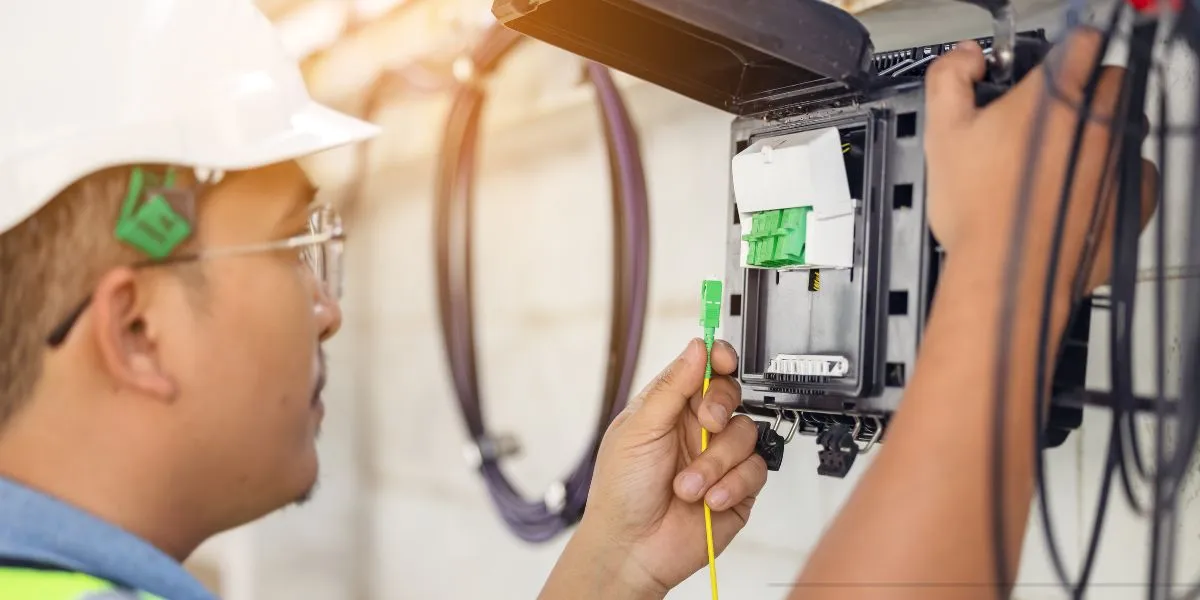How Is Fiber Optic Internet Installed at Home? A Step-by-Step Guide
In an era where high-speed internet powers everything from telemedicine to remote work, the technology behind your connection matters more than ever.
Enter fiber optic internet—a revolutionary advancement that’s redefining how we access the digital world. Unlike traditional copper-based connections, fiber optic internet uses thin strands of glass or plastic to transmit data as pulses of light, delivering blazing-fast speeds, superior bandwidth, and unmatched reliability.
For professionals like doctors managing patient records or households streaming educational content, this technology offers a significant leap forward. But how does fiber optic internet actually reach your home?
This guide breaks down the installation process step-by-step, providing insight into what makes this cutting-edge connectivity possible and how it’s set up for optimal use.
What Is Fiber Optic Internet?
Fiber optic internet stands apart from older technologies like DSL or cable. Instead of relying on electrical signals over metal wires, it uses light to carry data through fiber optic cables—hair-thin strands capable of transmitting information at speeds approaching that of light itself. This results in download and upload speeds that can exceed 1 Gbps, low latency for real-time applications, and the ability to handle multiple devices without slowdowns.
It’s no wonder that areas with access to fiber are seeing it become the preferred choice for hospitals, businesses, and homes seeking the best ISP in Pune or elsewhere.
Understanding its installation process reveals why it’s worth considering for your next upgrade.
Step 1: Feasibility Check and Scheduling
The process begins with determining if fiber optic internet is available in your area. Providers assess whether their network extends to your neighborhood, often starting with a main fiber line along streets or utility poles. Once availability is confirmed, an installation appointment is scheduled. This step ensures that your home can connect to the broader fiber network, laying the groundwork for a successful setup.
Step 2: Site Survey and Planning
Before any work begins, a technician visits your home to conduct a site survey. This involves mapping out how the fiber optic cable will travel from the nearest network point—typically a junction box or pole—to your property. The technician evaluates entry points, such as existing conduits or exterior walls, and plans the route to minimize disruption. In urban or suburban settings, this might involve coordinating with local utilities for underground access. The goal is a tailored plan that ensures efficient and reliable connectivity.
Step 3: Running the Fiber Optic Cable
Next comes the physical installation of the fiber optic cable. Depending on your location, this can be done aerially, using utility poles, or underground, via buried conduits. Technicians carefully extend the delicate, light-carrying fiber from the network hub to an exterior termination point on your home, often a small box mounted on an outer wall. This stage requires precision to protect the fiber from bends or breaks, ensuring the signal remains strong and consistent.
Step 4: Interior Connection and Equipment Setup
Once the cable reaches your home, it’s brought indoors through a small drilled hole or existing entry point. The fiber connects to an Optical Network Terminal (ONT), a device that converts light signals into electrical signals for your devices. The ONT is typically placed in a central location, like a utility closet or living room, and linked to a router for Wi-Fi distribution. Wiring is secured neatly to maintain both performance and appearance, completing the bridge between the external network and your home.
Step 5: Testing and Activation
The final step is testing and activation. Technicians verify the connection’s speed and stability, ensuring it meets expectations for broadband in Pune or any region. The service is activated, the router configured, and your devices connected. This ensures you’re ready to experience fiber’s full potential—whether downloading large files or supporting critical online tasks.
Conclusion
Fiber optic internet installation is a meticulous process that transforms how you connect to the world. From feasibility checks to final testing, each step is designed to deliver a robust, high-speed network to your doorstep.
For those seeking reliable broadband, understanding this process highlights the value of fiber. It’s an investment in speed, stability, and future-ready technology—perfect for homes and professionals alike.

